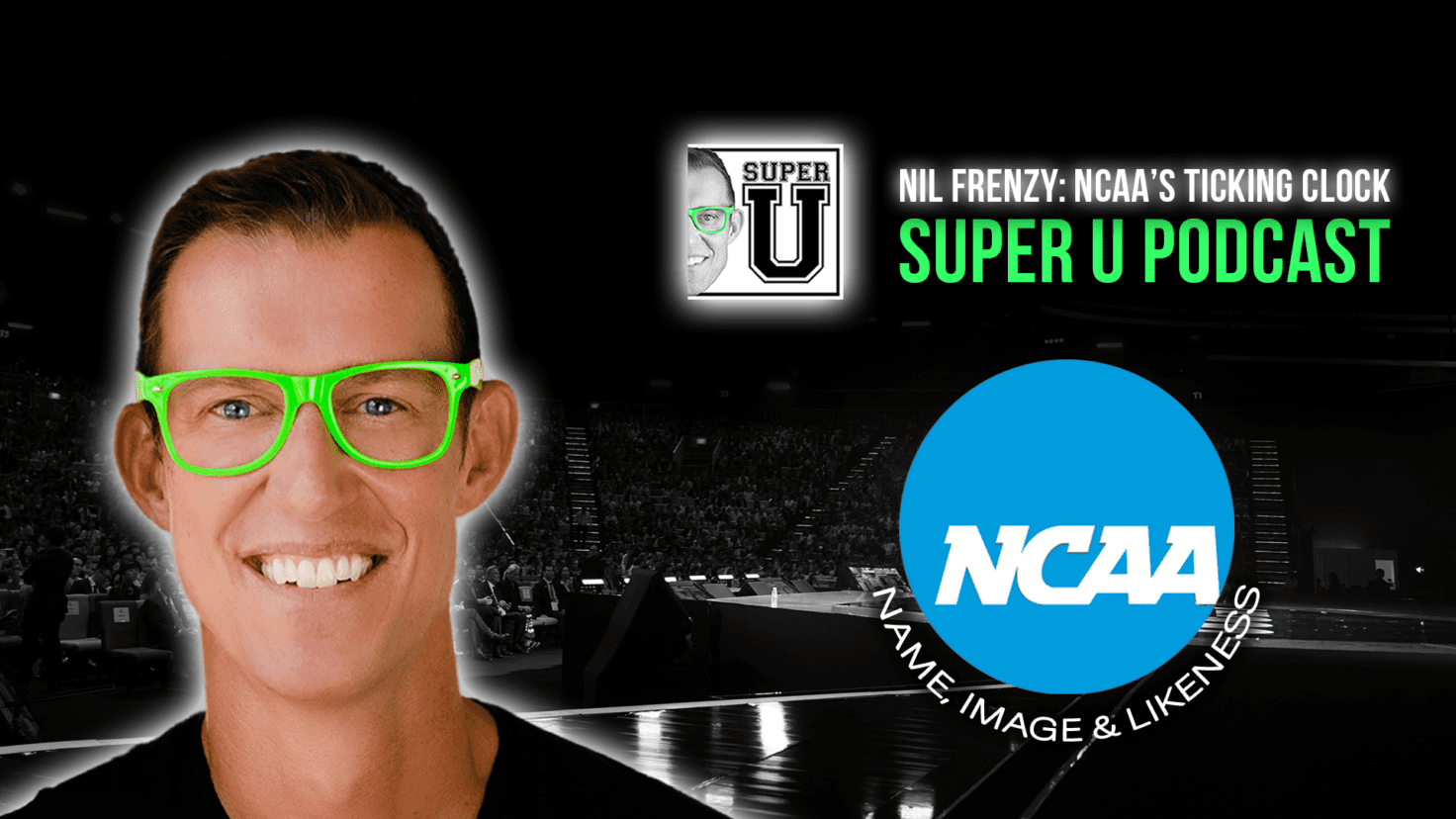Super U Podcast | Alex Honnold
On this episode of the Super U Podcast, Alex Honnold, professional rock climber and free soloist, gives us insight on how to handle doubt and overcoming fear. Click here to subscribe to the Super U Podcast. Need a sneak peek? Below are the main takeaways from the episode.
Super U Podcast | 7 Super Tips with Alex Honnold:
[5:50] Self-Doubt Is Normal
“So I started climbing in a gym when I was around 10 years old, which means that my life has been centered on climbing for more than 20 years. After nearly a decade of climbing mostly indoors, I made the transition to the outdoors and gradually started free soloing. I built up my comfort over time and slowly took on bigger and more challenging walls. And there have been many free soloists before me. So I had plenty of inspiration to draw from. But by 2008, I had repeated most of their previous solos in Yosemite and we’re starting to imagine breaking into new terrain. The obvious first choice was Half Dome an iconic 2000 foot wall that lords over the east end of the valley. The problem, though also the allure was that it was too big. I didn’t really know how to prepare for potential free soloing. So I decided to skip the preparations and just go up there and have an adventure. I figured I would rise to the occasion, which unsurprisingly was not the best strategy. I did at least climb the route roped up with a friend two days before just to make sure that I knew roughly where to go and that I could physically do it. But when I came back by myself two days later, I decided that I didn’t want to go that way. I knew that there was a 300-foot variation that circled around one of the hardest parts of the climb. I suddenly decided to skip the hard part and take the variation even though I’d never climbed it before. But I immediately began to doubt myself. Imagine being by yourself in the dead center of a 2000 foot phase, wondering if you’re lost.”
[5:50] Facing Your Fears
“I didn’t want to be a lucky climber. I wanted to be a great climber. I actually took the next year or so often free soloing because I knew that I shouldn’t make a habit of relying on luck. But even though I wasn’t soloing very much, I’d already started to think about “El Cap.” It was always in the back of my mind is the obvious crown jewel solos. It’s the most striking wall in the world. Each year for the next seven years I’d think this is the year that I’m going to solo El Cap. And then I would drive into Yosemite, look up at the wall, and think “no freakin way.” It’s too big and too scary. But eventually, I came to accept that I wanted to test myself against El Cap. He represented true mastery. But I needed it to feel different. I didn’t want to get away with anything or barely squeaked by this time I wanted to do it right.”
[7:39] Live the Life You Want
“I think part of that though, is just because that’s always been kind of easy for me because I’m already doing the thing that I love. You know, I’m already spending my time doing exactly what I want to be able to do, pursuing the goals that I care the most about, and I was living in my van by choice because it allows me to climb as much as I want. And I think that when you’re living exactly the way that you want to be living, it’s easy to give away what you don’t need because you know, you’re already on exactly the path.”
[8:39] Preparation Removes Self-Doubt
“As I practice moves, my visualization turns to the emotional component of potential. So basically, what if I got up there? And it was too scary? What if I was too tired? What if I couldn’t quite make the kick? I had to consider every possibility while I was safely on the ground, so that when the time came, and I was actually making the moves that a rope there was no room for doubt to creep in. Now is the precursor to fear. And I knew that I couldn’t experience my perfect moment if I was afraid. I had to visualize and rigorous enough to remove all doubt. But beyond that, I also visualize how it would feel if it never seemed doable. What if after so much work, I was afraid to try. What if I was wasting my time and I would never feel comfortable in such an exposed position? There were no easy answers, but El Cap meant enough to me that I would put in the work and find out. Some of my preparations were more mundane. This is a photo of my friend Conrad Anker climbing up the bottom of El Cap with an empty backpack. We spent the day climbing together to a specific crack in the middle of the wall that was choked with loose rocks. They made that section of climbing difficult and potentially dangerous. Any misstep might knock a loose rock to the ground and kill a passing climber hiker. So we carefully removed the rocks loaded them into the pack and repelled back down. Take a second to imagine how ridiculous it feels to con 1500 feet of a wall just to fill a backpack full of rocks. It’s never that easy to carry a pack full of rocks around. It’s even harder. On the side of a cliff, it may have felt silly, but it still had to get done. I needed everything to feel perfect if I was ever going to climb the route without a rope.”
[11:40] You Have the Remote Control
“I don’t know I mean, so I worried about that a little bit with El Cap. Because I wanted to free [solo] El Cap more than anything I’ve ever wanted in climbing basically. I mean, it was a more significant objective to me than anything else I’ve worked toward, right. And I did certainly worry that it was, you know, too far out, right. But then, I don’t know the thing with climbing though, is that you can just keep training, you can keep preparing, there’s no time crunch, there’s no pressure, there’s nobody forcing me to do it one way or another, I was kind of able to work at my own pace. And just keep working at it until I felt comfortable, you know until I could finally look at the wall and be like, you know what, like, it doesn’t look that scary anymore. Like I can’t do this. I am ready, I’m capable. I’m excited about it.”
[13:24] Recognize When The Ropes Are No Longer There
“You know, at a certain point, I realized I don’t have a rope anyway, I might as well go anywhere. Because either way the ropes not helping me. And so I sort of cast a wider net and I started looking at the wall with much broader eyes like maybe I should be 100 feet further, right? Maybe I should be 100 feet further left, even though you could never be there with a rope was like without a rope. You can go wherever you want. And so, you know, I started looking a lot more broadly and found a bunch of interesting variations. You know, the film doesn’t dive into that stuff, because it’s subtle. But um, but those are sort of the milestone, you know, the checkpoints along the process that I think were important for me. Yeah, I mean, there was a tremendous amount of effort that went into the preparation, and then the actual climb all went pretty smoothly. It’s just four hours of climbing. But you know, it’s freaking months and months to get there.”
[15:16] “There’s no such thing as bad weather…”
“Earlier this year, there is a winter storm warning for Vegas, it does snow in Vegas, sometimes in the mountains especially like get snow, there’s a winter storm warning for this like storm coming through. And I’d climbed like 20 days in a row basically, or something. And I wanted to use the storm day to try to hike this one section of the traverse. And I’m trying to do all these peaks, I figured I would like to take advantage of a non-climbing dare to do the one walking section to like figure out where the route goes. And so I went out in this crazy storm. And when I started it was like snowing a little and I was like in crazy when it’s really cold. And I was trying out these new like waterproof layers just to see how actually I wanted to try out before the jungle to see if they’d be good jungle layers. And, and so I go up into the mountain. Anyway, long story short, I get completely worked. It turns out visibility’s nothing, I didn’t know where I was going, I get lost in the mountains, it wound up being basically too difficult to train to travel through in the snow, like because I’d sort of taken it for granted but and Red Rock and those mountains, you walk on these like exposed sandstone slabs all the time. But when you cover them in like six inches of snow, it’s really kind of horrifying. You can’t just walk up the slabs anymore. It’s like now total tobogganing deathtrap where you’re going to slide. No, so I was like, anyway, so I grew up quite a ways. Eventually, I just had to give up and like, turn around, but I’m now you know, 2500 feet like up this mountainside. And then I turn around, and then it all is way more socked in, I couldn’t even see my tracks anymore. because everything’s like filled in and visibility’s nothing. And so I have it like a Garmin watch on so I kept like, looking a little track on my watch being like, Am I to the left or the right of the track that I came up, you know, like, Oh, you ran for mountains, I keep falling down. And you know, there’s like, you’re falling. Yeah, but sliding over things, or tripping on rocks is really steep hillside with like, you’re stepping through, you know, say six or eight inches of fresh powder. But underneath, it’s still like loose rocks, and cactuses, and things like that. So it’s like, you know, the terrain is not like a snow base or something, right? You’re just stepping through and falling over. Anyway, so I fell into cactuses a bunch of times. And so the thing is, I was totally hypothermic, completely wet, totally worked. And my hand had all these cactus thorns in it. And my other hand was too numb to like, manipulate anything. So I was like, biting the biggest thorns out and then just left the rest of them because it’s just I was just, I just couldn’t use my hands. And just keep staggering down the mountain. Anyway, eventually, I like made it back to the car made it back to the house, my wife all the thorns out because I like I couldn’t really use my hands. I was so worked, but I was kind of like, but that was like my rest day adventure. You don’t? I mean, it turned out to be way more early. Yeah, yeah. I mean, I was hoping that it was going to go better than that, and it didn’t really work out. But that is kind of the point that when you take on that elective love, you know, I was like I had a goal that I wanted to piece together this section of a hike didn’t work out that way I wind up you know, building a bunch of character instead. But you know, you’re just like, that’s just a normal day out. You know, it’s like when you’re adventuring in the mountains sometimes. Sometimes it’s winter storm advisors actually happened you know.”
Connect with Alex:
Website: http://www.alexhonnold.com/
Twitter: @alexhonnold
Instagram: @alexhonnold

To ensure you don’t miss future episodes, subscribe to our podcast by clicking here >> Super U Podcast. We hope these tips help unlock and unleash your inner superpower!
The Super U Podcast is hosted by #1 bestselling author and Motivational Speaker Erik Qualman.





